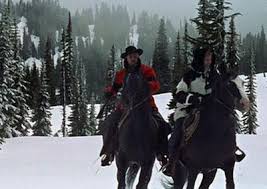Award-winning Juliette Douglas tells
me she really enjoyed writing SKELETONS,
the third episode of her acclaimed Freckled Venom trilogy, because ‘I got to
blow stuff up.’ Her heroine, former bounty-hunter Lacy Watson, is now married to
Marshal Rawley Lovett and settled down in Wyoming. Then her son and daughter,
and other children, are kidnapped by Joe Kannon. Kannon plans to sell them to a
slave trafficker in Mexico, but doesn’t reckon on Lacy pursuing, or the kids
themselves.
As SKELETONS touches on school teachers (who were almost always women)
in the Old West, I thought I’d talk briefly about the remarkable ‘culture bearers’
who helped tame and civilise the west not with guns but with learning and by spreading
knowledge.
Before
the American Civil War school teaching had been largely a male profession, but
after the war they abandoned it for better paid work. Many of the women who
replaced them were young, some as young as 15, but their results could be
impressive: between 1870 and 1900 Nebraska and Kansas boasted some of the
highest literacy rates in the U.S. That was despite a serious lack of
resources.
Schools themselves were usually one room affairs, sometimes converted
bunkhouses, shacks, log cabins, even brush arbours. Teacher SARAH NEWMAN recalled
her room being ‘maybe 10 by 12 feet.’ Classrooms were often over-crowded, with
teachers managing as many as 45 pupils. Only
eight grades were taught, and usually you’d have children in all eight grades
in the one room of the schoolhouse.
A schoolhouse Woods, Oklahoma 1895
ANNA
WEBBER in Kansas in 1881 lamented the lack of ‘benches, seats, blackboards or
writing desks… for seats we have 2 boards placed on rocks.’ Classes tended to focus on the
basics: reading, writing, arithmetic, history, spelling and penmanship - difficult
to teach when you didn’t have slates, paper or pencils. The Bible was often the
only book a family had to send to school for reading practice. For many years,
the main textbook was the McGuffey
Reader. With this shortage of books, teachers had to improvise. Lessons
were largely memorization, recitation and oral drilling. ELIZA MOTT was a
teacher who taught the alphabet using the inscriptions on tombstones! Spelling
bees were also popular.
School was usually only open four or five months a year out west. Children in farming communities were expected to help with planting and harvesting. So they might only be available for school between planting and harvesting time – which in Nebraska meant school ran from October to May.
Schoolhouse,
Nebraska 1889
The frontier sometimes threw up specifically
western challenges for these young women teachers. In 1872 SISTER BLANDINA
SEGALE, a nun of the Sisters of Charity order, was sent from Ohio to teach in remote
Trinidad, Colorado. It was a rough mining camp, and Sister Blandina once had to
save the father of one of her pupils from a lynch mob, which she bravely faced
down.
When the ‘Great Blizzard’ of January 1888 swept the Great Plains, 19
year old Nebraska school teacher MINNIE FREEMAN led thirteen children from her
schoolhouse to the safety of her home, half a mile away. It’s believed she tied
the children together with twine or clothesline during the blinding snowstorm,
carrying one child in her arms.
‘Song of the Great Blizzard: Thirteen Were Saved’ or ‘Nebraska's
Fearless Maid’, was written in her honour by William Vincent.
I dipped into blogs by KATHRYN ALLBRIGHT and ANNA KATHRYN LANIER for
some of this information.
A school mistress out west is one of
the main characters in what is generally regarded as the first real western
novel ever published – ‘The Virginian’
by Owen Wister.
Diane Lane plays a western schoolmistress in 'The Virginian' (2000)
Kids on the frontier feature in TV
shows like THE MONROES,
LITTLE HOUSE ON THE PRAIRIE and THE
RIFLEMAN
The Rifleman
and in movies like BAD COMPANY, THE
MISSING and THE COWBOYS.
'The Cowboys' (1972)
Reviews of SKELETONS:
‘Thrilling’
‘Fun and gritty Western’
‘Even more spit and vinegar than its
predecessors’
‘Heart-wrenching’
‘Douglas is a master story teller.’


























